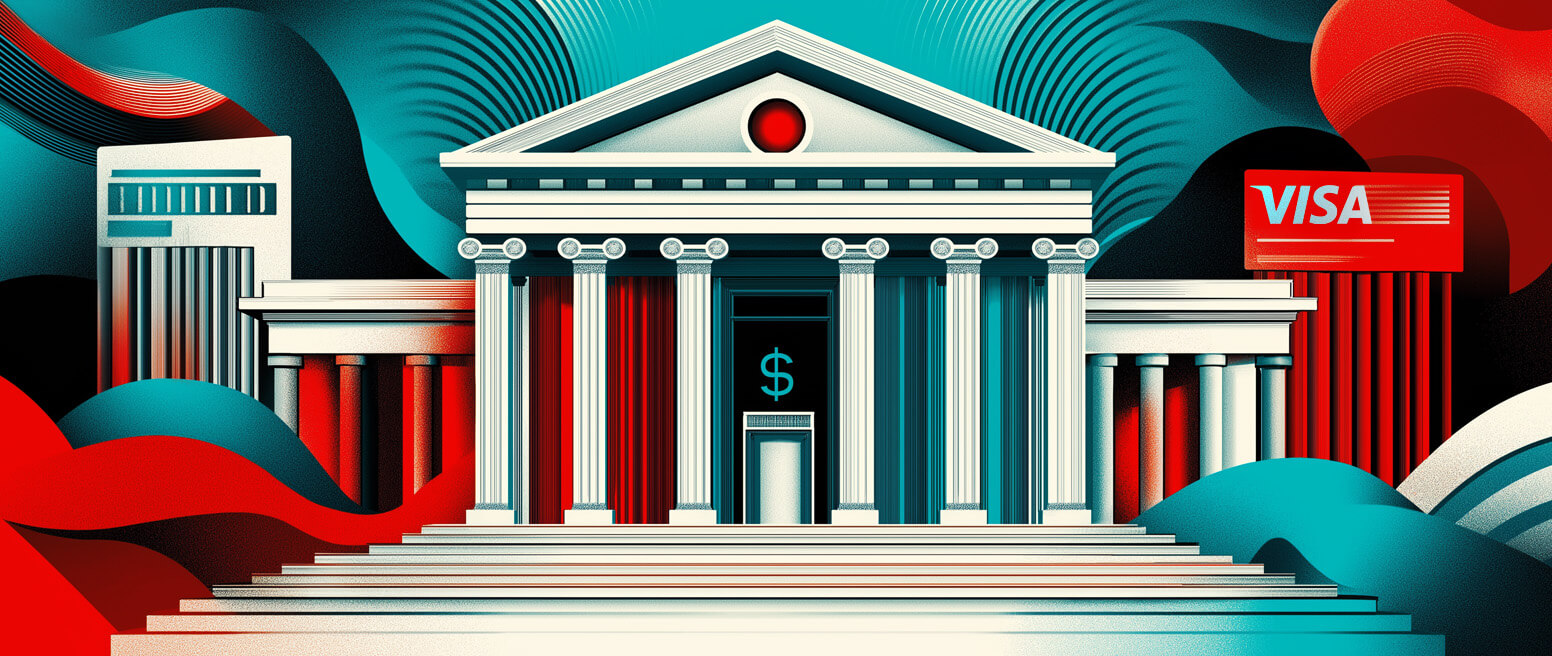In early 2020, Visa officially rolled out their purchase return authorization mandate on a global level. Prior to that, authorizations were required for most purchases, but not for returns.
The new regulations were announced by Visa several years long before they were fully implement. Under the rules, merchants are required to authorize all returns, just as they do with purchases. Visa’s intent was to improve the process for both merchants and consumers. The question: did it work?
Recommended reading
- Visa Chargeback Rules: Your “A-to-Z” Guide for Visa Disputes
- Visa Acquirer Monitoring Program: Major Visa Updates in 2024
- Visa Chargeback Time Limits: The 2024 Guide
- What is the Visa Arbitration Process for Chargebacks?
- Visa Authorization Rules: Changes to Time Frames & Options
- Visa Chargeback Fees: 8 Tips to Help You Cut Dispute Costs
What is Visa Purchase Return Authorization?
From the customer’s perspective, most returns for purchases made with a credit card seem pretty simple. The buyer brings back the merchandise, the merchant pushes some buttons on the register, and the credit shows up a couple of days later.
Historically, things weren’t all that different behind the scenes, either. You simply refunded the amount from a transaction, then presented the refund when you batched out at the end of the day. Basically, it worked the same way as other transactions, with most steps happening primarily between you and your acquirer.
The system worked, but it wasn’t perfect. As we said, the whole process could take one or two days. That was fine in the past, but then the internet came along and began changing consumers’ expectations. In the age of eCommerce, we’ve all grown accustomed to seeing our accounts updated within minutes—or even seconds—of a transaction.
The Visa purchase return authorization mandate established an authorization requirement for return transactions (also known as a cardholder refund). To process the return/refund, you’re now required to seek authorization. It’s the same basic steps you’d take to authorize a purchase, but working in reverse.
Put another way, this means your POS terminal dials out to the acquiring bank, which forwards the request through Visa to the issuing bank. For you and the customer, the process should be as fast as a purchase authorization. The difference is that the cardholder can immediately check their account and see the pending refund just as they would a pending charge. The actual settlement can still take up to 48 hours, but the process is now transparent to both parties.
Under Visa purchase return authorization, returns no longer require the original receipt; if the customer has the card information, that will suffice in most cases.
Why Did Visa Make This Change?
The Visa purchase return authorization mandate was similar to Mastercard’s action regarding their refund authorization mandate. The fundamental goal of both programs was to level the playing field for merchants, banks, and cardholders: it’s hard to misrepresent a situation if everyone has access to the same information.
Some merchants complained that the new rules added additional responsibilities for them to manage, which is true. That said, it may also reduce exposure to errors and chargebacks, thereby offsetting the added responsibility.
No single solution can stop all post-transaction fraud. Let us show why chargeback management requires a multi-tiered strategy.

Visa seems confident the new rules are doing exactly what they were designed to do. They assert that the policy has:
Did Visa Purchase Return Authorization Work?
So did the Visa return mandate accomplish what it set out to? For the most part, the answer is “yes.”
The mandate created transparency for all parties. It allowed for cardholders to instantly see that a return is in the works. Since its adoption, merchants have reported varying degrees of decreases in the number of inquiries and double refunds they’re experiencing. When it comes to chargebacks, though, the waters are a little murkier.
The new procedures have undoubtedly impacted the overall number of dispute issuances occurring on the Visa network. As we noted, merchant errors are likely to be caught prior to processing. And, the simple act of making cardholders aware that a return is being processed is enough to eliminate some disputes.
But, while that is a positive step, the reality is that anywhere between 60-80% of all chargebacks are probably cases of first-party fraud, (commonly known as “friendly fraud”).
Visa Purchase Return Authorization & Friendly Fraud
First-party fraud can happen when cardholders attempt to force refunds on legitimate transactions.
Here’s an example: a cardholder completes a purchase, then later experiences buyer’s remorse. Unfortunately, the merchant’s allowable time frame for returns has passed. To circumvent the system, the cardholder might file a chargeback by claiming the purchase was unauthorized, or that the item didn’t live up to expectations.
The customer probably doesn’t intend to file a claim at the time of purchase. However, the result for the merchant is the same as any other fraud attack: lost revenue, lost merchandise, and higher fees.
Also, we can’t ignore the fact that there are bad actors who deliberately engage in chargeback abuse. So-called “cyber-shoplifting” describes the pre-meditated practice of completing a purchase with the intent to file a dispute.
Friendly fraud happens post-transaction. Thus, the Visa purchase return authorization mandate won’t have much impact. And, since most chargebacks are friendly fraud, the new regulations have overall probably lowered disputes less than the creators might have hoped.
The Visa mandate has been a positive change overall. However, we’re still a long way from solving the chargeback problem.
Getting the Most from the Mandate: Simplify Returns
While the Visa purchase return authorization rules are a positive update, there are other steps you can take to get the most out of the mandate. For example, making the return process as simple and straightforward as possible will cut your chargeback risk down substantially.
If a buyer isn’t deliberately planning to commit fraud, then a customer-centric return policy could be your best friend.
Extended Return Windows
No-Hassle Refunds
Free Return
Shipping
Extended return windows, no-hassle refunds, and free return shipping are all ways to make the process friendlier for buyers. Also, your policies should be clear and straightforward, while also being flexible enough to adapt to different scenarios. Remember: the easier it is to obtain a refund, the less likely cardholders will be to bypass you in favor of their bank.
Remember to Anticipate Declines
It probably won’t happen often, but authorization requests for returns will occasionally be declined. How will you respond? That depends on why the decline occurred. Some common reasons include:
Make Best Practices a Priority
You never know when an authorization will be declined; it’s easy to be caught off guard. If you don’t have one already, now is the time to create and implement a process for effectively responding to declined refund transactions.
Perhaps the best advice we can give you is to build and implement as many strategies for success as you can. Your best practices should include practical risk notification and management, in-depth data analysis, and mitigation strategies to help your business comply with card scheme rules.
The Visa purchase return authorization requirements were put into place to improve customer returns. By showing cardholders' credits and return processing in real-time, Visa purchase return authorization created transparency in the Visa refund process. The Visa refund mandate also facilitates a positive customer experience by supporting additional services such as text alerts.
Authorizations on return transactions enable issuers to validate the customer’s account before the transaction is processed, and decline potentially fraudulent cards. It also helps minimize customer disputes, particularly in cases triggered by merchant error or when an account has been closed.
All in all, the system seems to be working. Many more such steps are necessary to bring the chargeback threat under control, though.
FAQs
What is Visa purchase return authorization?
The Visa purchase return authorization mandate is a processing regulation update implemented by Visa in 2019. It stated that, to process return transactions (also known as cardholder refunds), merchants are now required to seek authorization just like they would in processing a purchase.
Does Visa purchase return authorization apply to all credit card brands?
No. The Visa rules only impact Visa card transactions, but the mandate is similar to Mastercard’s earlier action regarding their refund authorization mandate.
Is the merchant required to have the cardholder re-present the card/device used for the original transaction?
No. The merchant may initiate the return by scanning the original purchase receipt to obtain the information of the Visa card used.
Why did Visa make the change?
The basic goal was to create transparency in the return process for merchants, banks, and cardholders. It helps reduce the volume of Visa customer inquiries, minimize chargebacks, and block double refunds.
What are valid responses to a Visa return authorization request?
Valid responses to a purchase return authorization request are “Approval”, “No reason to decline” and “Decline” with various decline reasons. “No reason to decline” (RC85) must be actioned as an approval response from the card issuer by the merchant.
Will Visa purchase return authorization prevent friendly fraud?
Not for the most part, no. It could catch some fraudulent card use before the transaction is processed, but the rules are not really designed to stop post-transaction fraud.












